What is On-Page SEO and Why is it Important?
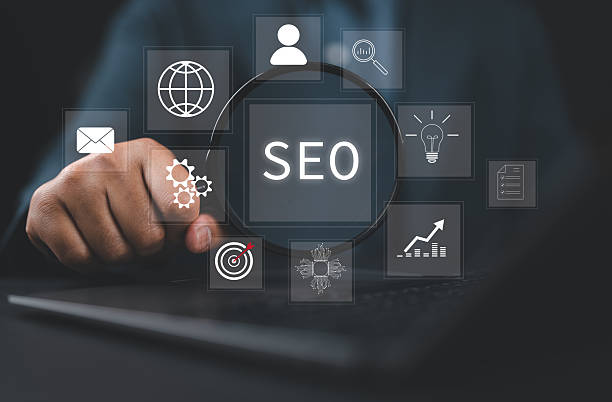
On-Page SEO refers to the set of actions taken within a website to improve the site’s ranking in search results.
These actions include optimizing content, site structure, HTML tags, and more.
The importance of On-Page SEO stems from the fact that search engines like Google pay special attention to these factors to better understand the content of the site and its relevance to users’ needs.
A site with strong On-Page SEO has a better chance of achieving higher rankings in search results and attracting targeted traffic.
In other words, On-Page SEO helps you optimize your website for search engines and show them what your site is about and why it should rank high.
This process includes optimizing titles, meta descriptions, and site content, as well as improving URL structure and internal links.
It should be noted that On-Page SEO is not just limited to keywords and optimizing user experience is also an important part of it.
For example, if your website is about selling sports shoes, you should make sure that the content of your pages is fully related to this topic, that relevant keywords are used naturally in the text, and that the site structure is such that users can easily find the information they need.
Also, page loading speed and site compatibility with different devices are also important factors in On-Page SEO.
On-Page SEO is an ongoing process that requires review and updates.
As search engine algorithms change, you need to update your SEO strategy to stay at the top of search results.
Is your company’s website performing as well as your brand deserves? In today’s competitive world, your website is your most important online tool. Rasaweb, a specialist in designing professional corporate websites, helps you to:
✅ Build credibility and customer trust
✅ Convert website visitors into customers
⚡ Get a free consultation!
Keyword Research and Choosing the Best Ones
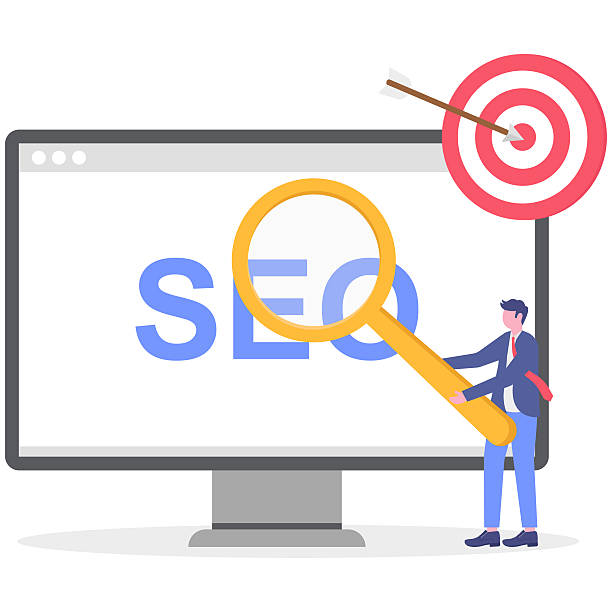
Keyword research is the cornerstone of On-Page SEO.
Without knowing the keywords your audience uses to search for information related to your business, you cannot produce optimized content.
The keyword research process includes identifying, analyzing, and selecting words that are most relevant to your site’s topic and attract the most traffic to your site.
There are many tools available for keyword research, including Google Keyword Planner, Ahrefs, SEMrush, and Moz Keyword Explorer.
These tools help you find search volume, competition, and related keywords.
After compiling a list of keywords, you need to evaluate them based on criteria such as search volume, competition, and relevance to your site’s topic.
It’s best to choose a combination of head keywords with high search volume and long-tail keywords with lower search volume but higher conversion rates.
Long-tail keywords are usually more specific and indicate a more specific intent on the part of the user.
For example, instead of using the keyword “sports shoes”, you can use the long-tail keyword “buy men’s sports shoes for running in Tehran”.
Finally, you need to use the selected keywords naturally and purposefully in your site’s content.
Avoid overusing keywords (Keyword Stuffing), as this can lead to your site being penalized by search engines.
Successful On-Page SEO requires a balance between optimizing for search engines and providing valuable content for users.
Optimizing Titles and Meta Descriptions

Titles and meta descriptions are the first elements that users see in search results.
Optimizing these elements is very important for attracting clicks and increasing the site’s visit rate.
Titles should be attractive, relevant, and include the page’s main keyword.
The length of titles should be such that they are fully displayed in search results (usually less than 60 characters).
Meta descriptions should provide an attractive summary of the page’s content and encourage users to click.
The length of meta descriptions should also be less than 160 characters.
Titles (Title Tags) play an important role in On-Page SEO, as they help search engines understand the main topic of the page.
In addition, attractive titles can increase click-through rate (CTR) and thus attract more traffic to your site.
Meta descriptions (Meta Descriptions) also help search engines display a summary of the page’s content in search results.
A good meta description can convince users that your page is the best answer to their question.
To optimize titles and meta descriptions, you should use your main keywords naturally and purposefully in them.
Also, you should use attractive and encouraging phrases to encourage users to click.
Remember that titles and meta descriptions should be unique and optimized separately for each page of your site.
Using duplicate titles and meta descriptions can lead to a decrease in your site’s ranking in search results.
| Element | Importance | Important Notes |
|---|---|---|
| Title Tag | Very Important | Includes the main keyword, attractive, less than 60 characters |
| Meta Description | Important | Attractive summary, encouraging, less than 160 characters |
Optimizing Content for Search Engines and Users

Content is the king of On-Page SEO.
High-quality, valuable, and relevant content to users’ needs not only improves your site’s ranking in search results, but also increases user satisfaction and converts them into loyal customers.
To optimize content, you need to use your keywords naturally and purposefully in the text, use a suitable structure to organize the content (such as using titles and subtitles), and update your content regularly.
Content should be written for users, not just for search engines.
Try to make your content engaging, readable, and understandable.
Use images, videos, and infographics to enrich your content.
Also, make sure your content is free of spelling and grammatical errors.
Spelling and grammatical errors can reduce the credibility of your site and reduce your ranking in search results.
On-page SEO in your content means considering the keyword in the first paragraph, using synonyms and related words to the keyword, and using appropriate headings for the article.
In addition, your content should be unique and original.
Copying other people’s content can lead to your site being penalized by search engines.
Also, your content should be completely related to your site’s topic.
Irrelevant content can reduce bounce rate and thus reduce your site’s ranking in search results.
Successful On-Page SEO requires a balance between optimizing for search engines and providing valuable content for users.
Do you have an online store but your sales are not what you expect? Rasaweb solves your problem forever with professional online store website design!
✅ Significant increase in conversion rates and sales
✅ Exceptional user experience for your customers
⚡ Click to get a free consultation with Rasaweb!
Optimizing Images and Videos
![]()
Images and videos play an important role in the attractiveness and user engagement with your site.
Optimizing these elements for search engines is also very important.
To optimize images, you should use relevant and descriptive file names, use ALT tags to describe images, and reduce the size of images to increase page loading speed.
The ALT tag helps search engines understand the content of images and display them in image search results.
Also, the large size of images can reduce page loading speed and affect user experience.
To optimize videos, you should use attractive and descriptive titles, provide complete and comprehensive descriptions for videos, and use relevant tags to categorize videos.
You can also upload your videos to video sharing platforms such as YouTube and Vimeo and place their links on your site.
On-Page SEO of videos helps you attract more traffic to your site and introduce your brand to more audiences.
Using high-quality images and videos can increase user engagement with your site and thus improve your site’s ranking in search results.
However, you should note that the large size of images and videos can reduce page loading speed.
Therefore, you should optimize your images and videos to maintain their quality and increase page loading speed.
Proper URL Structure and Internal Linking
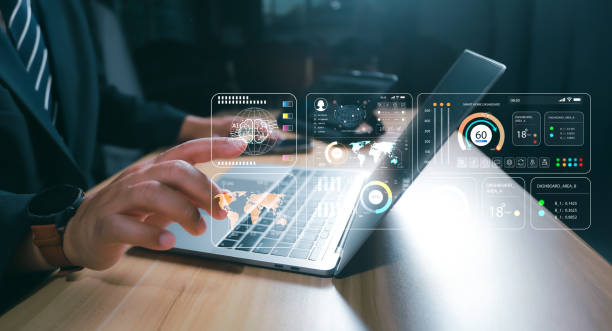
Proper URL structure and internal linking are two important factors in On-Page SEO that help search engines understand your site’s structure and easily index different pages of your site.
The URL structure should be simple, readable, and relevant to the page’s content.
Avoid using long and complex URLs and try to use your main keywords in the URLs.
On-Page SEO of URLs helps you improve your site’s ranking in search results and attract more traffic to your site.
Internal linking (Internal_Linking) means creating links between different pages of your site.
Internal linking helps search engines find related pages of your site and understand their value.
Also, internal linking helps users easily navigate your site and find the information they need.
For internal linking, you should use relevant and descriptive anchor texts and direct the links to pages that have relevant and valuable content.
| Feature | Description |
|---|---|
| URL Structure | Simple, readable, relevant to content, includes keywords |
| Internal Linking | Creating links between related pages, using descriptive anchor texts |
Internal linking is one of the important SEO factors that helps Google better understand the website structure. For more information, visit the website Internal Linking .
Site Loading Speed and User Experience
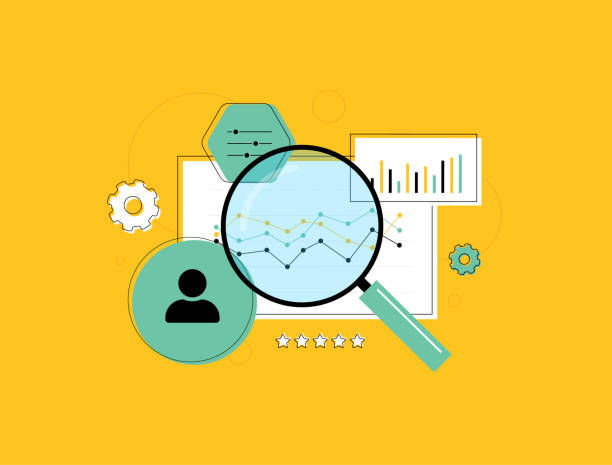
Site loading speed and user experience are two important factors in On-Page SEO that directly affect your site’s ranking in search results.
Users expect your site to load in a few seconds and if your site is slow, you may lose users.
Site loading speed depends on various factors, including image size, coding quality, and server type.
To increase site loading speed, you can use site speed testing tools such as Google PageSpeed Insights and fix the existing problems.
User experience (User_Experience) means the ease of use and enjoyment of users of your site.
A site with a good user experience encourages users to stay on your site longer and visit more pages.
To improve user experience, you should use a simple and user-friendly design, make site navigation easy, and update your content regularly.
On-Page SEO UX helps you improve your site’s ranking in search results and attract more traffic to your site.
Google has paid a lot of attention to site speed and user experience in recent years. To learn more about this topic, use the Google Tool
Optimizing for Mobile (Mobile-Friendly)

Given the increasing use of mobile devices for internet searches, optimizing your site for mobile devices (Mobile_Optimization) is of particular importance.
Google prioritizes sites that are optimized for mobile devices and displays them in higher positions in search results.
To optimize your site for mobile devices, you should use responsive design, increase site loading speed, and use readable fonts and large buttons.
On-Page SEO Mobile-Friendly helps you attract more traffic to your site via mobile devices and introduce your brand to more audiences.
Responsive design (Responsive_Design) means designing the site in such a way that it automatically adapts to the screen size of different devices.
By using responsive design, you can ensure that your site is displayed well on all devices, including desktops, tablets, and mobile phones.
You should also increase your site loading speed for mobile devices, as mobile users usually use slower internet.
On-Page SEO Mobile is key to success in today’s world.
In addition, you should use readable fonts and large buttons on your site so that mobile users can easily read your content and interact with your site.
Also, you should avoid using annoying pop-ups and excessive advertising on your site, as this can affect user experience and reduce your site’s ranking in search results.
If you do not have a mobile-friendly site, your internal SEO will have problems.
Are you tired of losing customers due to poor online store design? With Rasaweb, solve this problem forever!
✅ Increase sales and visitor-to-customer conversion rate
✅ Smooth and attractive user experience for your customers⚡ Get a free consultation
Using Schema Markup to Better Understand Content
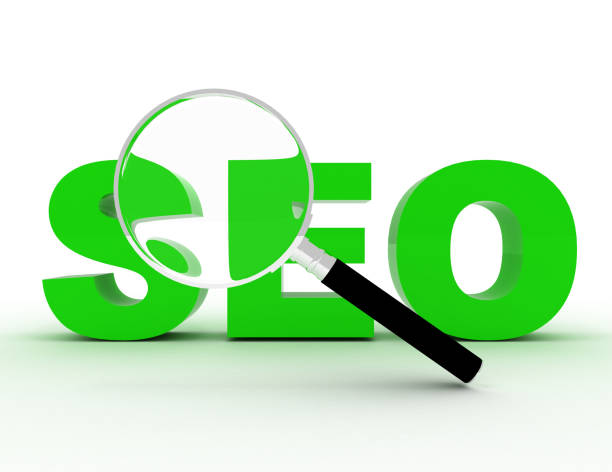
Schema Markup is an HTML code that helps search engines better understand the content of your pages.
By using Schema Markup, you can provide search engines with accurate information about products, services, events, people, and other entities on your site.
This information helps search engines display richer search results (Rich_Snippets) and attract more traffic to your site.
On-Page SEO Schema helps you stand out from the competition and be seen more in search results.
Schema Markup can also help improve your site’s click-through rate (CTR).
Richer search results are usually more attractive than regular search results and are more likely to encourage users to click on them.
To use Schema Markup, you can use Schema code generation tools and place the generated code on the pages you want.
You can also use SEO plugins for WordPress that automatically add Schema Markup to your site. Schema Markup is a powerful tool that can help you improve your site’s ranking in search results and attract more traffic to your site.
Using this feature in internal SEO can be helpful.
Search engines need a series of structured data to better understand your content, which you can provide to them through Schema Markup. For more information, visit the website Schema.org.
Continuous Analysis and Improvement of Internal SEO

On-Page SEO is an ongoing process that requires continuous review and improvement.
After taking the initial steps, you should regularly analyze your site’s performance in search results and identify your strengths and weaknesses.
To analyze site performance, you can use tools such as Google Analytics and Google Search Console.
These tools help you track your site’s traffic, identify the keywords that users use to find your site, and fix technical problems on your site.
Based on the analysis results, you should update your On-Page SEO strategy and take the necessary steps to improve your site’s ranking in search results.
For example, you may need to target new keywords, update your content, or improve your site structure.
You should also regularly follow changes in search engine algorithms and adjust your SEO strategy according to these changes.
On-Page SEO is a long-term investment and requires patience.
Also, using tools such as Google Search Console, you can find errors on the site and fix possible problems. This tool helps you to continuously review your site’s performance.
Frequently Asked Questions
| Number | Question | Answer |
|---|---|---|
| 1 | What is On-Page SEO? | On-Page SEO refers to the set of actions that are performed within a website and to optimize its pages in order to achieve a better ranking in search results. |
| 2 | What is the most important factor in On-Page SEO? | High-quality, relevant and comprehensive content that meets the user’s needs is the most important factor in On-Page SEO. |
| 3 | What role does the Title Tag play in On-Page SEO? | The title tag is one of the most important factors that tells search engines and users what the page content is about. It should include the main keyword and be attractive. |
| 4 | How important is the Meta Description tag? | Although it does not directly affect the ranking, it is very effective on the click-through rate (CTR) in search results and encourages users to visit the page. |
| 5 | How is image optimization done in On-Page SEO? | By using a suitable alt tag, compressing the image size to increase loading speed and naming the image file meaningfully. |
| 6 | What is the importance of using headings (H1, H2, H3) in On-Page SEO? | Headings help to structure the content, increase readability and help search engines understand the hierarchy and subtopics of the content. |
| 7 | What does internal linking mean and what are its benefits? | Internal linking means creating links between different pages of a website. This helps to distribute credit, improve user navigation and help search engine crawls. |
| 8 | Where should the main keyword (Focus Keyword) be placed on the page? | The main keyword should be placed in the title tag, meta description, H1, first paragraph, and naturally throughout the text and, if possible, in the URL address. |
| 9 | What effect does copied or duplicate content have on On-Page SEO? | Duplicate content can harm the site’s ranking and confuse search engines as to which version is the original and may be considered spam. |
| 10 | How important is page loading speed in On-Page SEO? | Page loading speed is an important ranking factor and directly affects user experience. Slow pages increase the user bounce rate. |
And other services of Rasa Web Advertising Agency in the field of advertising
Smart Social Media: A combination of creativity and technology for campaign management through attractive user interface design.
Smart Marketplace: A combination of creativity and technology for campaign management through marketing automation.
Smart Brand Identity: Designed for businesses looking for online growth through the use of real data.
Smart Linking: An effective tool to increase sales with the help of attractive user interface design.
Smart Conversion Rate Optimization: An effective tool to improve SEO ranking by optimizing key pages.
And more than hundreds of other services in the field of internet advertising, advertising consulting and organizational solutions
Internet Advertising | Advertising Strategy | Reportage Advertising
Resources
Comprehensive Guide to Internal SEO from Zoomit
,Video of Internal SEO Training from Aparat
,What is Internal SEO? – Faraznetwork
,What is Internal SEO (On-Page SEO) and Why is it Important? – Nikan Sepehr
? Rasaweb Afarin Digital Marketing Agency, your strategic partner on the path to online brilliance and sustainable business growth. Keep your brand at its peak with our professional services in the field of SEO-optimized website design and digital marketing.
📍 Tehran, Mirdamad Street, next to the Central Bank, Southern Kazerun Alley, Ramin Alley No. 6
“`



